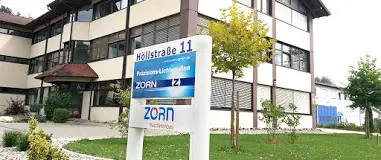Stockach
Baden-Württemberg
78333
Germany
mechanical engineering
We have been working on the assembly of small and very small parts for almost 30 years. In particular, the processing of wire or wire-like components has always been our strength. As a wire we understand eg needles and / or tubes. Due to our origin as a resource building of an incandescent lamp factory, we were and are confronted with this topic almost every day and are constantly developing new solutions or re-using well-tried ones.
Over the years, this has resulted in a classic special machine construction that is predominantly used in precision engineering technology. This includes the sensor industry as well as medical technology and many more. Wherever we need to assemble, handle and position small parts, that’s where our strength lies.
All common manufacturing technologies are used by us and combined for them into a complete system. This includes, for example:
– Joining, pressing
– screws, rivets
– welding, resistance welding, ultrasound, laser welding
– soldering, soldering wave, soldering iron, induction etc.
– gluing, gluing glue, dosing
– Laser marking, inkjet and pad printing, labeling
– Image processing as a test system or parts, or position detection
– distance measurement, length testing
For a large part of these technologies, there are specialists who concentrate on specific processes and whose products are then used purposefully by us.
robot cell
A large part of all systems is designed as a robot cell at ZORN Maschinenbau. The extremely flexible handling, the versatility and high precision are good arguments for the use of robots. In part, several such robots are in use on a system.
Robot with camera support
Very often, the assembly robots are supported by camera systems. Be it to determine the position of the products or to check the geometry of the components to check their position, etc. The perfect interaction between robot and camera is now a standardized application on our systems.
feeding
Many systems are equipped differently with components. Here we differentiate between a manual input in which an operator inserts and removes components in the system cycle, and a manual entry using product pallets. Here, the system can work fully automatically for a certain time, which is often sufficient for smaller quantities. In the next expansion stage, these pallets can then be stored in magazines, whereby very long running times can be achieved.
Alternatively, very many parts can then also be supplied via conventional separating devices. Here, the typical spiral conveyor with linear distance is the most widespread.
However, as soon as several components are to be supplied with one system, other techniques are required in which a visual partial recognition is always necessary.
manufacturing technologies
Pictures with keywords without further detailed description
– Joining, pressing
– screws, rivets
– welding, resistance welding, ultrasound, laser welding
– soldering, soldering wave, soldering iron, induction etc.
– gluing, gluing glue, dosing
– painting, drying
– Laser marking, inkjet and pad printing, labeling
– Image processing as a test system or parts, or position detection
– distance measurement, length testing
Sorry, no records were found. Please adjust your search criteria and try again.
Sorry, unable to load the Maps API.
